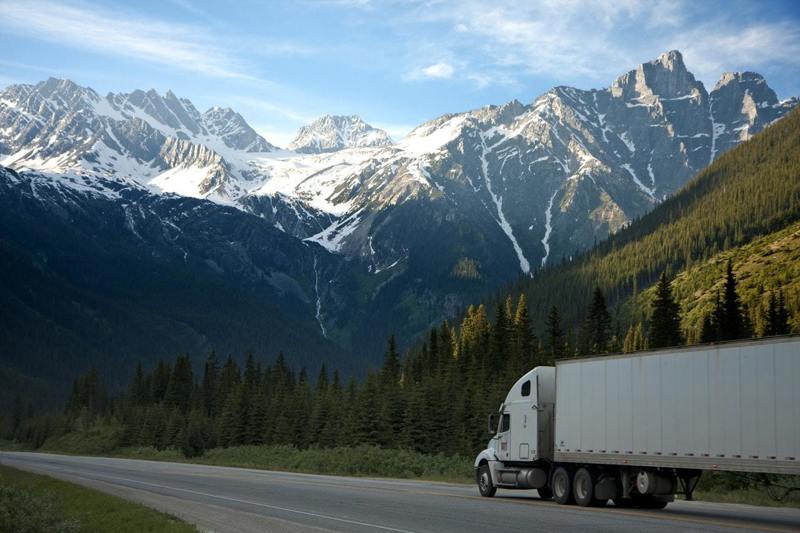With ELD enforcement now in full swing in the U.S., truckers have less time to deliver loads and are picking and choosing their lanes. Shippers are paying the price.
Unless this is your first day in the shipping or logistics industry, you’ve no doubt heard of the electronic-logging device (ELD) mandate. If it is your first day, then welcome. You’ve joined at a time when the Federal Motor Carrier Safety Administration’s (FMCSA) ELD mandate is raising the cost of shipping within North America and looks to be changing U.S. truck shipping patterns — all within a strong economy.
The ELD mandate requires carriers and drivers to use electronic logging devices to record their hours-of-service (HOS), instead of paper logs. Soft enforcement began in December 2018, and full enforcement kicked off in April 2018. It is now much more difficult for drivers to fudge their HOS, reported The Journal of Commerce (JOC). “Truckers that in the past would have taken a five- or six-hour run, made a delivery, picked up a new load, and returned home are now bumping against the 11-hour daily driving limit. They are also stopping earlier to secure overnight parking, rather than risking a violation.”
In fact, a recent survey by DAT Solutions reported that 87 percent of truckers surveyed “said it was ‘harder’ or ‘much harder’ to find parking since the ELD mandate took effect...”
How is that affecting shippers?
According to a study by Zipline Logistics, cited by JOC, small carriers and owner-operators are “leaving shipments of 450 miles or longer to larger fleets.” Andrew Lynch, president of Zipline Logistics, told the JOC, “Those runs are now two days for those guys, so they don’t want them. The smaller carrier will lose a day or a half-day on that load, between staying within hours of service and getting the delivery done. To keep them in the fold, the rate has to go up dramatically.”
Unlike small carriers, large fleets prefer the longer runs. Lynch told the JOC that he expects to see those companies use “a mix of linehaul and local drivers to get loads over the hours-of-service road bump that has come into clearer focus in the ELD era. Those carriers are switching trailers near destinations rather than running dock to dock,“turning themselves into integrated networks. They’re dropping and swapping trailers at locations partway through a trip,” said Lynch. More trucks and more drivers also raise rates, however.
Some quick math
Theodore Prince, executive vice president and chief operating officer of Tiger Cool Express, broke down the rise in rates in an editorial. “Prior to ELD enforcement, a driver could accrue 750 miles daily by running an additional four hours every day. With new ELD enforcement, the number of miles driven — and resulting compensation — will both be reduced by 27 percent. According to Prince, to make the driver “economically indifferent,” rate-per-mile must increase. Or drivers will have to simply drive faster, but that comes with the added cost of possible crashes, additional fuel costs, and speeding tickets — not to mention the associated rise in insurance premiums.
The reduction in available miles also reduces available capacity, Prince noted. “Prior to ELD enforcement, a single driver might achieve 35 annual transcontinental roundtrips; however, post-ELD implementation, the same driver is legally constrained to 21. This represents a 40 percent capacity reduction.” The industry isn’t feeling that shrinkage yet, Prince explained. Instead, it will be a rolling impact that will become evident over the next several months. When that happens, he predicts that it will either cause a large exodus of drivers from the market or speed up rate increases or both.
Time for shippers to step up?
Both Lynch and Prince say that onus is now on shippers. “Shippers are wise to take a more holistic look at how logistics is used in their operations,” Lynch advised. “Up until late 2017, almost every company on the consumer goods side looked at logistics as a cost center, a necessary evil, not as integral to relationships and decision making.” Everyone has to align under the new reality, Lynch said.
Alignment could come in many forms, such as opting for a multiyear dedicated trucking service that would protect both shipper and carrier. That’s costly, but in the long-run, it may be the smart move in an environment with strong economic growth and tightening truck capacity.
Technology will be helpful, too. In fact, ELDs will provide additional data that could, over time, isolate the areas of inefficiency in supply chains.
In short, the answers are out there. But, most everyone agrees that partnerships and communication are going to be critical for success.
